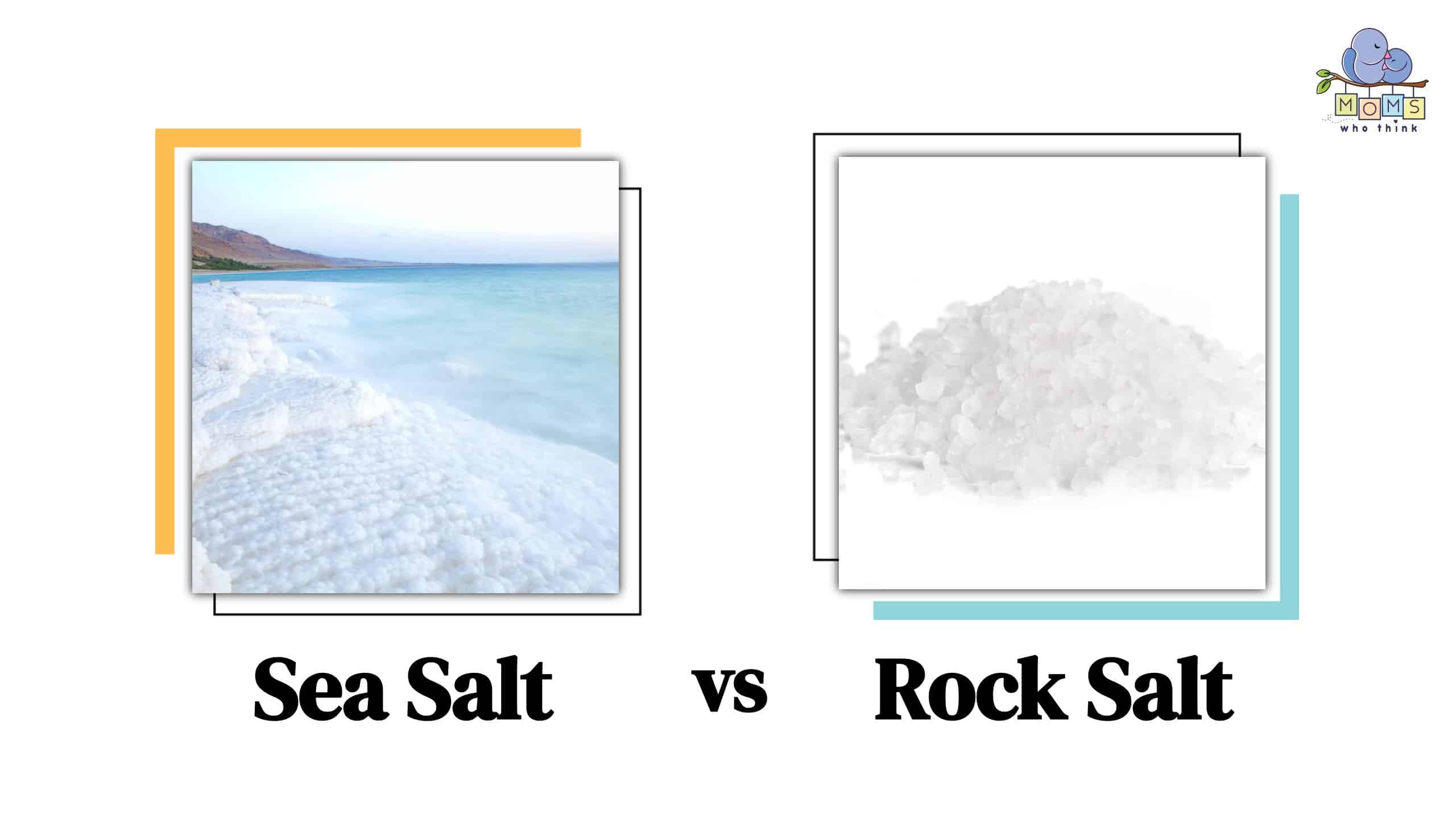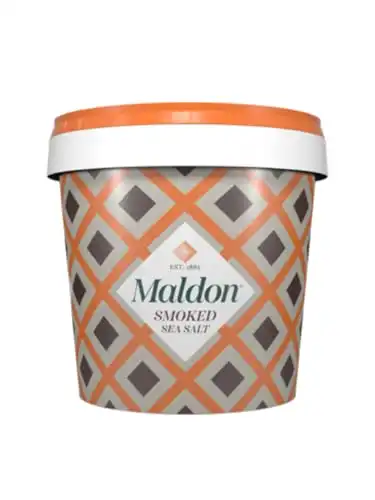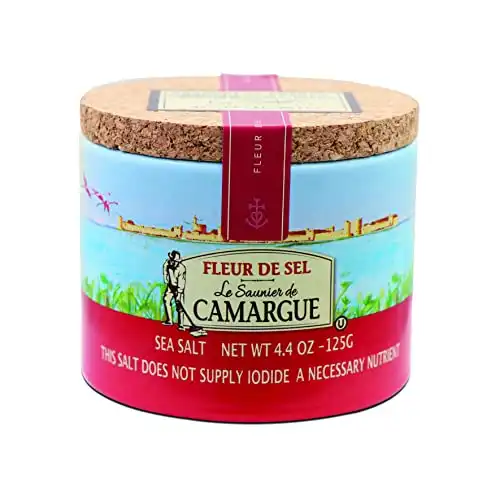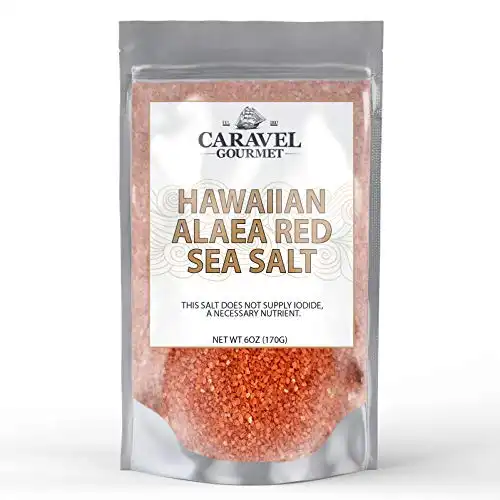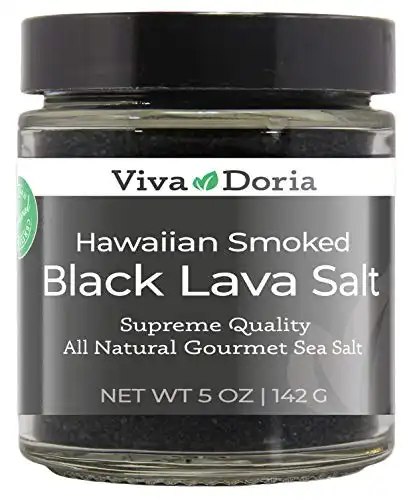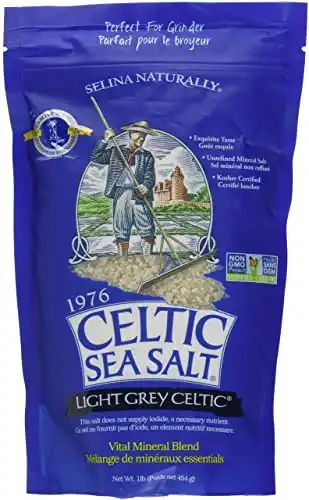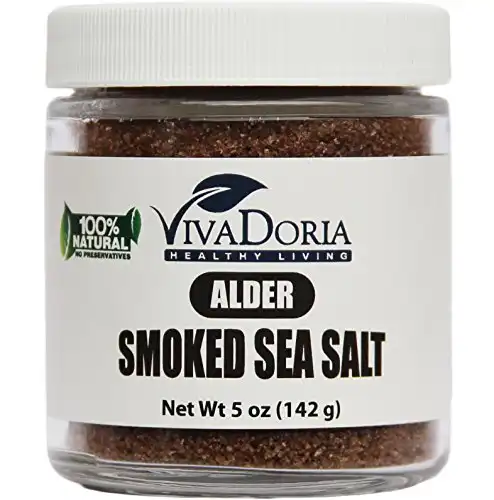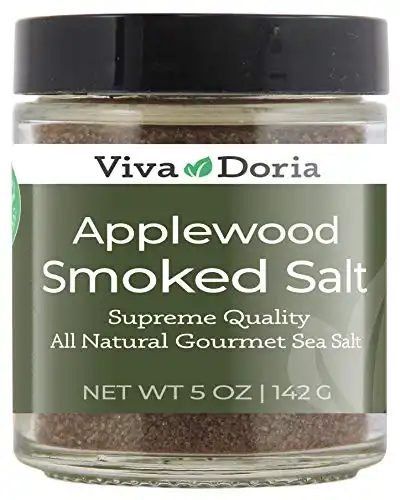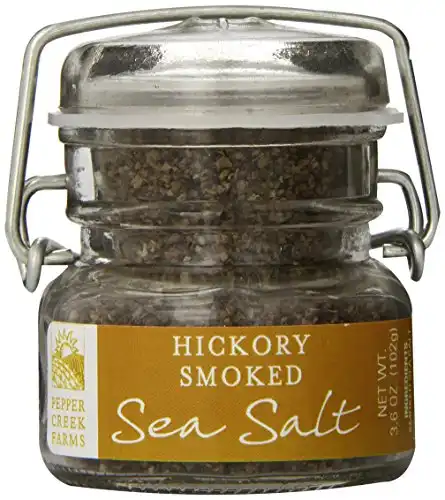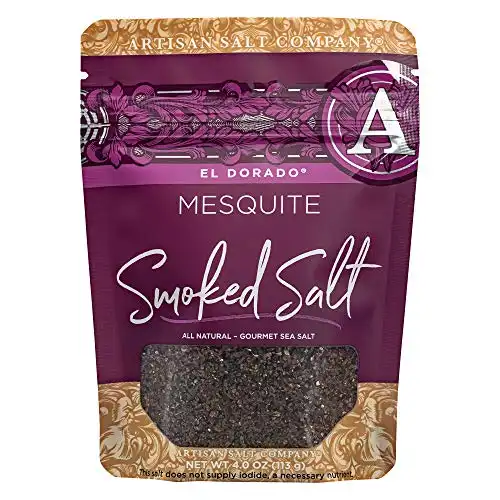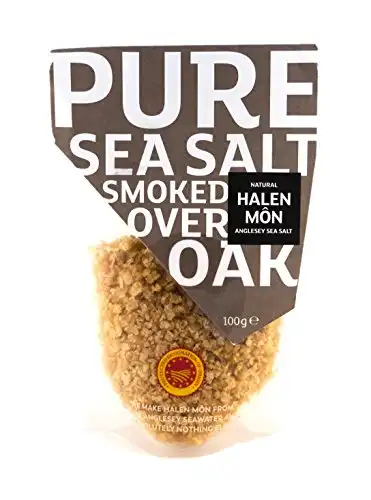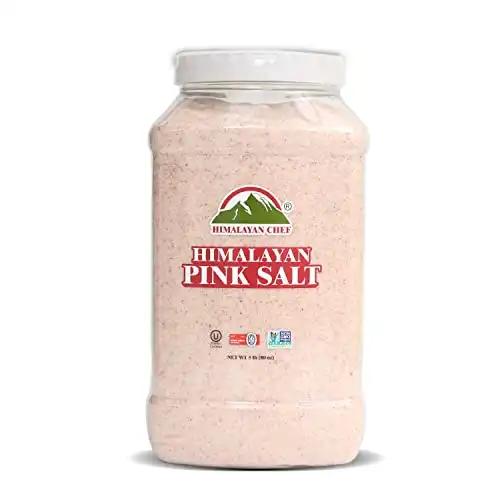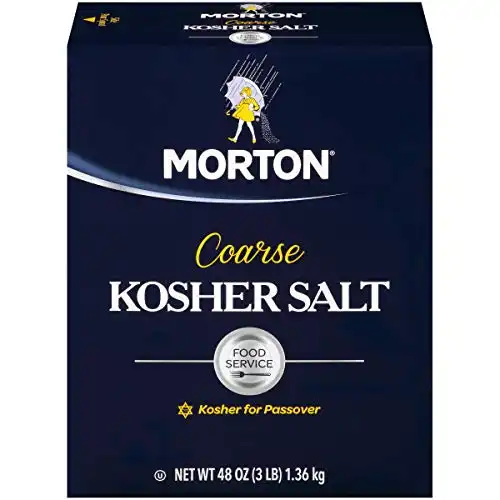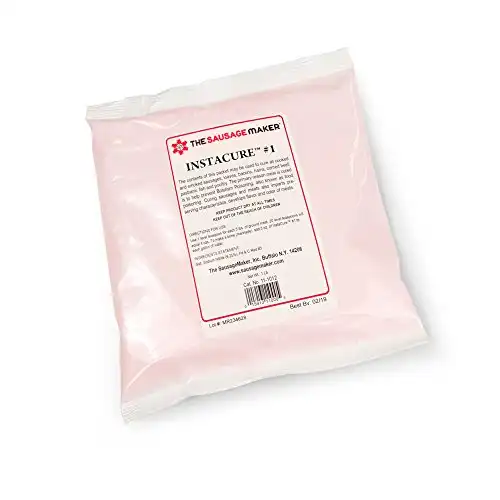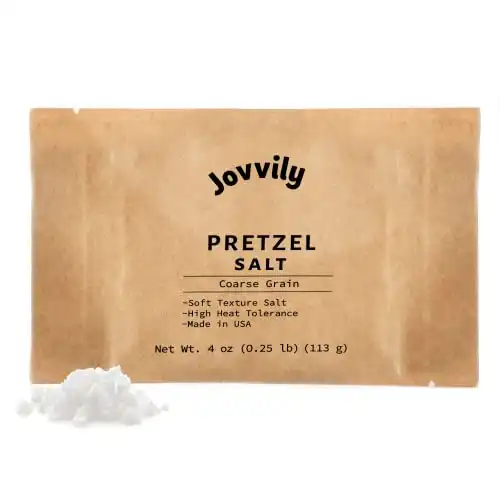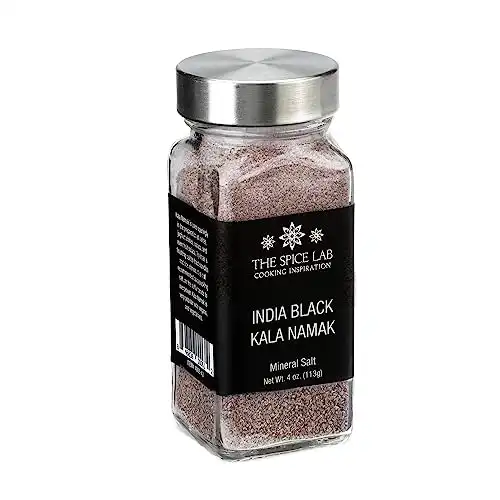Sea salt is made by evaporating seawater, whereas rock salt is mined in its natural form. Salt is an important ingredient in any culinary dish and is mainly used to enhance the flavor of foods. In this article, we will discuss where sea salt and rock salt come from, what each salt does, their health benefits, and how you can use them in culinary dishes.
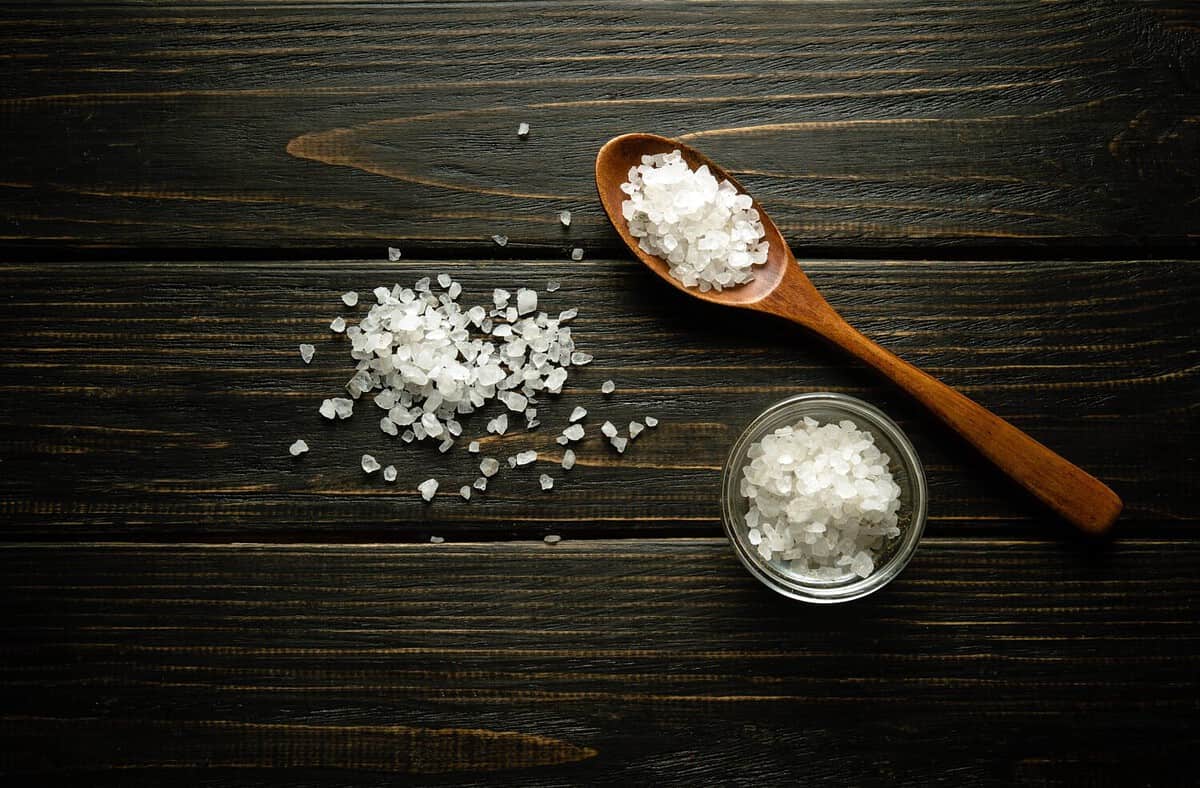
©VITALII BORKOVSKYI/Shutterstock.com
What is Sea Salt?
Let’s keep it simple: sea salt originates from seawater landing in rock pools. Once the sun has evaporated the water, it leaves a salt residue behind on the rocks in various sizes, and then it is harvested.
Sea salt is a natural source of sodium, also containing magnesium, calcium, and potassium, which comes from evaporating seawater. Sea salt has a coarse texture and is often used in cooking to give your dish extra flavor. There are many types of sea salt used to enhance different culinary dishes; let us look at them.
Types of Sea Salt
- Smoked salt: Salt is smoked for up to 14 days in diverse types of bark that give it that oak-smoked fragrance. Smoked salt is used as a finishing on meats and vegetables; however, it is not recommended for baking.
- Traditionally smoked over English Oak for days.
- Versatile - great on steaks and other meats, fish, roasted and grilled vegetables, and even on a Margarita or Bloody Mary.
- Pure and natural, no additives.
- Natural, subtle smoky flavor - enhances your food but doesn't overpower it.
- Fleur de sel: is a very thin salt that is used for finishing, soups, vegetables, fish, and meat. It is one of the most expensive salts and is harvested by hand in France. Recommended for cooking and baking.
- A great alternative to table salt.
- Composed of distinctive salt crystals and slightly damp, fleur de sel de Camargue is a unique salt that gently enhances any dish.
- Finishing salt can be used at the table or added at the end of cooking for meats, fish, and vegetables
- Real cork top and eye-catching container
- Hawaiian red sea salt: Also known as Alaea salt, it is an unrefined sea salt mixed in volcanic clay, giving it its rich red color. Hawaiian red sea salt holds eighty minerals and is rich in iron oxide. Recommended for cooking and not for baking.
- Gorgeous, mineral-rich Pacific salt
- Clean, simple, and delicious ingredients
- More flavor, less sodium
- 100% satisfaction guarantee & free cookbook
- Lava sea salt: Also known as Hiwa Kai, lava sea salt is a sea salt that is mixed with charcoal to give it its black color. Lava sea salt is often used as a finishing salt for fish and meat and is harvested in Cyprus and Hawaii. Not recommended for baking, recommended for cooking.
- 100% Natural Smoked Black Lava Salt, Fine Grain
- The salt obtains its natural color and smoky flavor from lava and activated charcoal
- All-Natural Gourmet Sea Salt, Premium Quality, Best Flavor
- Country of Origin: USA
- Celtic sea salt: Also known as grey salt, it gets its name from grey minerals left behind after the seawater has evaporated. Celtic sea salt brings out the flavor of the food and is not as overpowering as table salt. Recommended for cooking, not for baking.
What Are the Benefits and Uses of Sea Salt?
Sea salt is unrefined, meaning it is raw and unprocessed and holds natural minerals and vitamins that can benefit our bodies. Sea salt can regulate blood pressure. It helps by lowering the sodium in the body.
Additionally, sea salt can promote healthy skin. The minerals in the sea salt help unclog pores and can remove dead cells.
Let us take a closer look at the uses of each sea salt.
Uses of Smoked Sea Salt
These are five popular smoked sea salts:
- Alder smoked salt: Has an intense smoky flavor, which is created by smoking Alaskan sea salt over burning alder wood. This salt will bring out the taste and flavor of any dish. It will become your secret go-to ingredient.
- 100% Natural Smoked Sea Salt
- Food Grade, Vegan, Gluten Free
- An organic Pacific Sea salt that is cool smoked over red Alderwood
- No artificial coloring or flavoring is added
- Gives food a delicious smoke flavor both on and off the BBQ
- Applewood smoked sea salt: This salt is cold smoked, which means that smoke is pumped slowly into a box at a temperature between 68°F – 77°F for 12-48 hours. Applewood sea salt is versatile and can be used in soups, stews, and salads, as a brine, and as a finishing salt. Delicious when added to seafood or used as a rub for meats.
- 100% Natural Applewood Smoked Sea Salt
- Food Grade, Vegan, Gluten Free
- An organic sea salt that has been slowly smoked above an applewood fire
- No artificial coloring or flavoring is added
- Gives food a delicious smoke flavor both on and off the BBQ
- Hickory sea salt: Has a sweet and savory flavor with a hint of hickory smoked wood. Hickory sea salt pairs well with barbecue dishes and is perfect with prawns, burgers, pork, and turkey.
- Mesquite sea salt: The mesquite wood comes from a tree that is part of the legume family and grows naturally in northern Africa, the Northern and Southern parts of America, and Eastern Asia. Mesquite salt has a bold, smoky flavor and is perfect for use as a meat rub.
- BRISKET, RIBS, HOMEMADE JERKY AND MARINADES all pop with a light sprinkling of El Dorado's powerful flavor
- COLD SMOKED FOR 48 HOURS using a proprietary technique, El Dorado by Salt Works tastes distinct and robust
- PERFECT FOR SPANISH, MEXICAN AND TEX-MEX CUISINE El Dorado brings the taste of traditional slow-cooked pit barbecue to any dish
- BRISKET, RIBS, HOMEMADE JERKY AND MARINADES all pop with a light sprinkling of El Dorado's powerful flavor
- ALL-NATURAL AND CERTIFIED AUTHENTIC Durango is made from Optically Clean sea salt and is both organic compliant and kosher certified
- Oak sea salt: This salt is a strong, flavorful salt pairs well as a finishing salt and is often used in pasta and salads.
What is Rock Salt?
Rock salt, also known as halite, is a specific type of salt that can be found in the earth's rocky crust. It is made by the evaporation of ancient seawater.
Rock salt is a versatile and common ingredient in most kitchens. It is affordable and can add a delightful flavor to any dish. It can also be used to make brine for pickling or preserving food.
Let us take a look at the different types of rock salts and their culinary uses.
Types of Rock Salt
- Himalayan rock salt: Is one of the world's purest salts and contains eighty-four of our body's minerals. Himalayan salt helps balance the body’s pH level through its alkalinizing effect. Using Himalayan rock salt can prevent the body from becoming too acidic. It also improves sleep.
- Himalayan Chef Pink Himalayan salt is hand-chipped from the oldest salt mine in the Punjab region of Pakistan, near the foothills of the Himalayas. It is the purest salt on the earth.
- Himalayan Pink salt fine is packed with 84 essential minerals and trace elements that are beneficial for human health and well-being.
- Kosher salt: This is a popular salt used by Jews. It doesn’t contain iodine or any other additives. Kosher salt is used during the koshering process, which involves the blood being removed from the meat.
- Long enjoyed by chefs for its taste, texture, and ease of use, Morton Kosher Salt can be used to bring out the natural flavors of a wide variety of dishes.
- Curing Salt: It is used for preserving foods and preventing fungus and bacteria. It is also commonly used on meats and when creating pickles and brines.
- Easy-to-use curing agent for meats that require cooking, brining (wet curing), smoking, or canning. This includes jerky, ham, bacon, brisket, sausage, snack sticks, corned beef, pâtés, pastrami, luncheon meats, meat loaves, poultry, fish, and more.
- Pretzel salt: Made by mixing baking soda, water, and coarse salt, then baked in the oven.
- Weight: 4 ounces.
- Top or coat soft pretzels
- It goes well on bagels and dinner rolls, or add to DIY bath salts.
- Kala Namak Salt: Also known as Himalayan black salt, it is a volcanic black rock salt found in the Himalayas and parts of Northern India.
- Perfect for vegans.
- Kala namak black salt health benefits is known to relieve intestinal gas and heartburn.
- This Mineral rich black salt is high in iron; it is made by heating Himalayan salt and iron to create this mineral-rich salt.
What Are the Benefits and Uses of Rock Salt?
Loaded with vitamins and minerals, rock salt can improve digestion and remove toxins from the intestines. Rock salt also helps with muscle cramps by balancing the lack of potassium. A home remedy for sore throats is to gargle with warm rock salt. Taking a rock salt bath can help rejuvenate and revitalize the skin.
Let us take a closer look at the uses of each rock salt.
Uses of Rock Salt
- Himalayan salt: Ideal for grilling meats, vegetables, and seafood and is even used in baking cookies and desserts. It is also added to warm bath water to help relieve muscle aches.
- Kosher salt: Used for koshering meats from seasoning vegetables and baking.
- Curing salt: Mainly used in the curing process for meats such as pastrami and ham to prevent foods from spoiling.
- Pretzel salt: Just like its given name, pretzel salt is used to give pretzels that unique crunch. It can also be used as a rub and seasoning.
- Kal a Namak salt: This is a common salt used in Indian cuisine, such as chana masala. It adds flavor to various dishes and chutneys. Due to its high sulfur content, it smells like eggs and is often used in tofu dishes.
Conclusion
While both sea salt vs. rock salt are versatile and useful ingredients, both contain many minerals and have unique qualities. Whether you are a newbie cook or a professional chef, consider adding sea salt and rock salt to your pantry. It is a sure must.
Frequently Asked Questions
What is sea salt good for?
Sea salt contains a variety of minerals, including potassium, calcium, and magnesium, which are beneficial for the body.
Is sea salt more expensive?
Yes, sea salt is a bit more expensive and is also considered to be healthier.
What type of salt is the cheapest?
Table salt is the most common and cheapest salt in most households.
Can I cook and bake with smoked sea salt?
Cooking with smoked sea salt can add some extra flavor to your dish. However, when baking, smoked sea salt is not recommended. Yet you can jazz up your vanilla ice cream by adding a sprinkle on top to give it a tasty, smoky flavor.
How do you store sea salt and rock salt?
To prevent salt from clumping and going hard, it is best to store it in an airtight container in a cool place.
Recipes
Here are three delicious recipes for you to try:
Print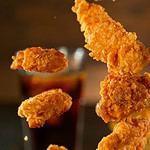
Mustard Seasoned Chicken Strips
- Yield: 4 servings 1x
Ingredients
⅓ cup egg substitute
1 Tablespoon prepared mustard
1 garlic clove, minced
¾ cup dry bread crumbs
2 teaspoons dried basil
1 teaspoon paprika
½ teaspoon salt
¼ teaspoon pepper
1 pound chicken tenderloins
Instructions
1. In a shallow bowl, combine the egg substitute, mustard, and garlic.
2. In another shallow bowl, combine the bread crumbs, basil, paprika, salt, and pepper.
3. Dip chicken in egg mixture, then roll in crumbs.
4. Place on a baking sheet coated with cooking spray. Bake at 400° for 10 15 minutes or until golden brown and juices run clear.
Nutrition
- Serving Size: 3 ounces cooked chicken
- Calories: 188
- Sodium: 525mg
- Fat: 2g
- Carbohydrates: 14g
- Fiber: 1g
- Protein: 30g
- Cholesterol: 67mg
Comparison of Sea Salt vs. Rock Salt
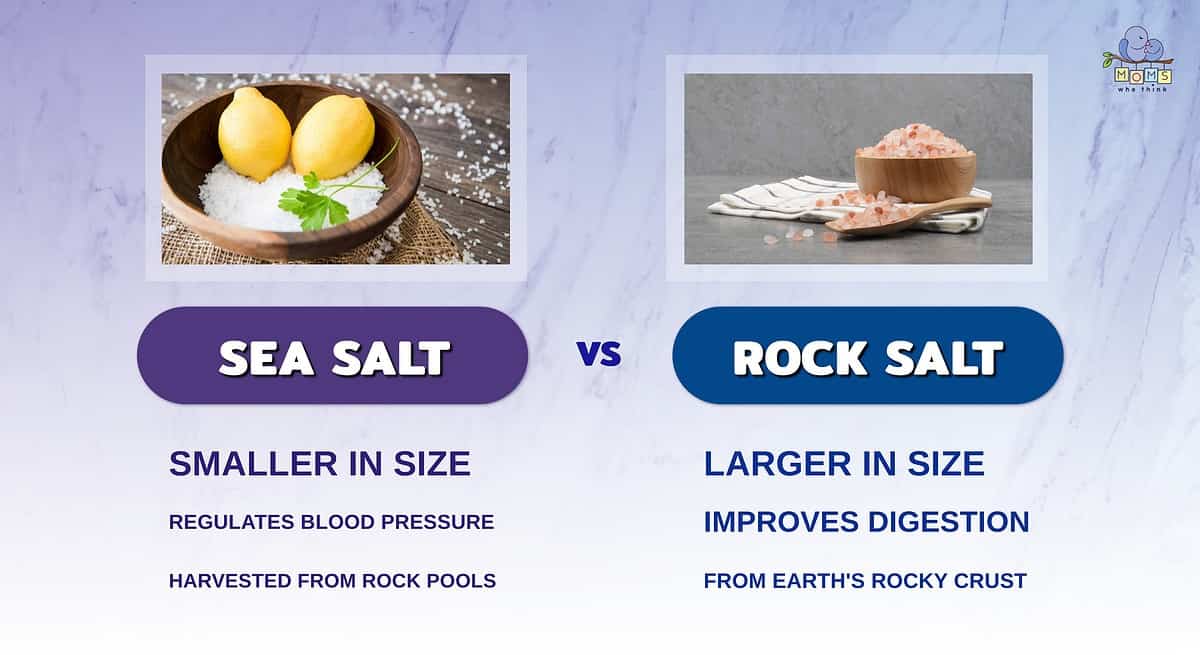
Now that we have discussed the different types of sea salt and rock salt let's recap a few ways these two differ.
- The most obvious distinction is the fact that rock salt is larger than sea salt.
- While both sea salt and rock salt are great in dishes, rock salt is also great as a brine for pickling or preserving food.
- There are many health benefits that come with rock salt and sea salt. However, rock salt can help remove toxins and improve digestion. Sea salt is great for lowering sodium in the body and regulating blood pressure.
